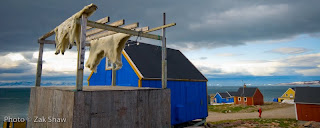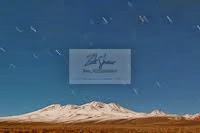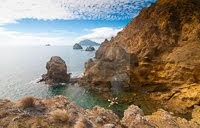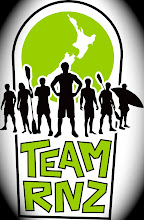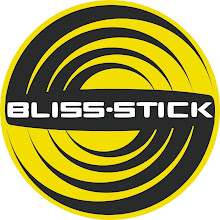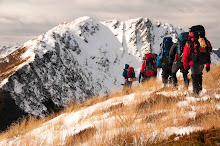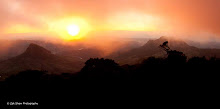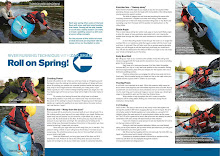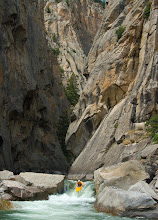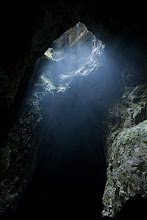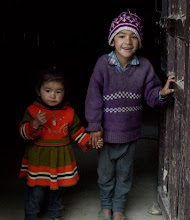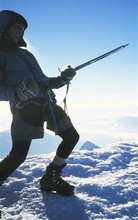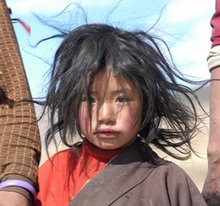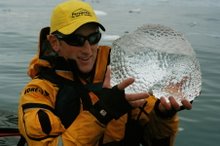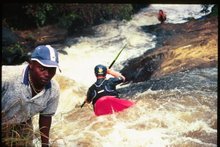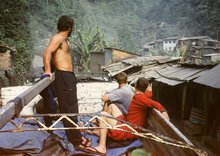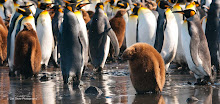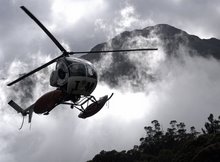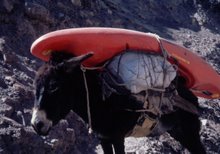Order calendars via zakshawphotography@gmail.com or the secure Paypal option below.

My 2014 calendar was entirely photographed on the western side of New Zealand's Southern Alps. "Land in the West" is printed at a size of A4 with twelve calendar month pages displaying stunning outdoor environment photographs. Take a look at my Facebook page to view all twelve 2014 calendar images! Order here via Paypal or email me at zakshawphotography@gmail.com if you would prefer to pay with online banking. Thanks for your support!
Wednesday, December 01, 2010
Saturday, September 04, 2010
HIGH ARCTIC TRANSIT - SVALBARD, ICELAND GREENLAND, CANADIAN ARCTIC. My journey across the far north 2010. Images Zak Shaw
Wednesday, August 04, 2010
Arctic Diaries
Back in the groove, its like I never left! In Svalbard’s main port of Longyearbyen I boarded the Akademik Ioffe and reunited with friends of past seasons. Russians, Pilipino Aussies, Canadians, Americans, Polish, English and Swedish and kiwi staff employed to deliver polar expedition cruises.
This all began in 2006. Unknown to me a friend Graham Charles had put my name forward to an expedition cruising company with the hope that they would need guides to work their northern season.
Calling from Vancouver, Canada Aaron Lawton introduced himself and then offered me twenty-five days work in the high Arctic onboard a Russian vessel called the Akademik Ioffe. My role as part of the fifteen strong staff was to deliver a polar sea-kayaking program. I acted quickly seeking permission for time off from an employer in California before boarding a plane bound for Cornwallis Island twenty-four hours later!
My first voyage involved a transit of the renowned Northwest Passage. We headed south following the routes of famed explorers such as Amundsen, Franklin, and Ross, explorers who sought fame, fortune and a fabled passage that would link the Atlantic and Pacific Oceans. History and hardship, it seemed the two came as one. Those bold enough to explore this barren wasteland and brave the cold of winter accepted sacrifice, many would not return home. We visited the graves of English sailors on Beechey Island, a desolate windswept landscape shaped by abrasive winds. We paced the thawing tundra of Devon Island, the largest uninhabited island on earth and sat in kayaks below Baffin Island’s eroding bird cliffs. Greenland’s Jacobshavn Glacier held us in awe, its scale, sheer power and beauty simply incomprehensible. At night the black northern abyss captured all passengers under the snaking green spell of the Aurora Borealis.
Before I knew it the Ioffe was docked in the Inuit settlement of Iqualuit and it was time to fly south. I’d had a blast and walked away hopeful of a return to the frozen north.
Now in my 5th Arctic season I have been fortunate enough to have seen many regions of the High Arctic and I return each year looking to discover more.
This season has kicked off with a real bang! Graham and I are working together for the first time in the Arctic and its his style is more in tune with my own.
Our two week voyage commenced in Svalbard. We found a group of bears feasting on a dead whale, kayaked under clouds of Little Auk returning to their nests and had a stunning time in Hamiltonbukta; a heavily glaciated bay and host to thousands of birds that raise their young on the tiny ledges spire topped cliff called Austplana. Two days at sea saw us visit the worlds largest fiord system; Scoresbysund in Eastern Greenland. My visit last year was a full month earlier and we found impenetrable sea ice bands and gigantic glacial bergs jamming the fiord. Many of our landings locations have been new this year, which keeps it fresh and exciting.
During our four day visit temperatures soared the entire time. Ice charts had gradually showed ice clearing out of Scoresbysund twelve days prior to our arrival so our transit of many fiords went largely unhindered by ice. Most days I paddled my kayak wearing cotton shorts and just one thermal top on! Turquoise melt water cascaded from melt bowls the size of hot tubs sitting on the tops of tabular bergs. Calving was constant. Brash ice bobbing around on the surface formed large areas of slushy soup. Millennia aged air cracked and popped as it escaped free having previously been trapped in the Greenland ice cap. This is one of the polar special sounds. All the signs of climate change were obvious everyday and its effect pronounced. Hot days under the midnight sun makes for comfortable days but the glaciers are dying because of it.
The Denmark Strait dividing Eastern Greenland from Iceland is one of the world’s populated areas for whales and we enjoyed some great Humpback whale sightings on our way to Reykjavik.
Wednesday, July 21, 2010
Gisborne Herald Peru Expedition feature
This week the Gisborne Herald ran a short article on our Peru adventures. The article has some pretty cheesy lines added by the editorial team that didn't come from me but hey...enjoy the read
http://www.gisborneherald.co.nz/article/?id=18530
Monday, July 12, 2010
Big mountain climbed, Big river paddled - Tiki Tour - Peru

Our time in Peru was grand! Rewarding and surpassing expectations JV and I left several kilograms lighter. Weight loss indicative of long days and reserves burnt. Is it always worth it? hell yes! Nothing a couple of weeks on a cruise ship wont fix!
Traditional Peru
Image - Zak Shaw
 Image - Zak Shaw
Image - Zak ShawThanks to Tiki Wine, New Zealand who came on board in support of our travels 24 hours before I left NZ! Their sponsorship dollars went a long way in Peru helping us move from one adventure to the next. From home Tiki followed us closely constantly excited about supporting kiwi adventure.
It felt good to have the support of a New Zealand brand and toast to adventurous spirit of kiwis!
May the Tiki Tour continue!
Saturday, June 12, 2010
A return to the Apu
 lhama's on route to the Apurimac. Image - Zak Shaw
lhama's on route to the Apurimac. Image - Zak ShawUpon completing our Paucartambo descent we needed rest and Cola de Mono was the perfect place for it. JV’s shoulder had connected hard with a wall on day two on the Paucartambo and once the pain killers wore off it got worse. (JV will now have his hands on the oars of a cargo raft in the Grand Canyon. I hope his shoulder feels strong)
Back in Cusco a street stall selling bbq meat and potato kebabs forced JV onto a course of Cipro and our remaining days slotted for kayaking began to diminish.
With logistics sorted and food brought at 7am Gian Marco shuttled us thirty minutes out of town to a junction village called Izcuchaka.
Back on a mission it felt good to again be mobile. JV had returned to health and our wagon climbed high out of one valley and into the next headed for the Waipachaka bridge and the Apurimac River.
 The entrance rapids on the Apurima's lower "Black Canyon"
The entrance rapids on the Apurima's lower "Black Canyon"Image - Zak Shaw
Things got worse and his persistence saw us pay a little more but nothing near double. With bad karma lingering our trip began.
Before leaving NZ a friend had asked me what my top outdoor job had been? It was not a one job answer but my time on the Apurimac seven years prior was high on the list.
As we floated and carved our way down into the canyon lined orange that time returned.It was better than I remembered! Big rock, gold pillars, vertical walls, cactus and good whitewater.
The rivers bedrock sides gradually waned and for two hours the river rolled into large volume rapids. My memory of things continued to hold fast as we passed the camp of “La Mesa” Condor circled overhead soaring above us with wings like branches.
Soon we were above “Dola de Muelas” a powerful class five test-piece. We dropped in and felt the shove off the first horizon. I was looking for proof of improvement having run the rapid many times in 2003 but arrived at the bottom feeling like I’d been punched!
Wednesday, June 02, 2010
PERU - Paucartambo Primed. Good times, 150km of whitewater, jungle fruit, big canyon, coffee riverside, soup for the soul...
A great mixture of amazing whitewater, isolation and mountain to lowland jungle environment variation makes the Paucartambo journey an absolute classic.
Paucartambo – 3000m, Put in = 2800m (guess), Take out - Penetracion – 600m (guess)
River km – 150 (ish)
Here is how we found it.
The drive to the town of Paucartambo and onward to the Puente (bridge) Pilco took longer than expected before Hernando turned and drove back to Cusco in the rain and darkness.

Paucartambo market colors - Image Zak Shaw
Travelling as light as possible we were without a stove and sturdy shelter. As the rain fell and we looked for dry ground under trees it felt like an ominous beginning.An hour later our luck changed when a family accepted our request for shelter and took us in.Using their fire our night passed under their slapped together shack.
 Our hospitable family - Image Zak Shaw
Our hospitable family - Image Zak ShawIn their kitchen we forced down oatmeal (my least favourite food, but its light, so...) before sliding into the river at 8.30am.
 Team shot before we hit the river . Image Zak Shaw
Team shot before we hit the river . Image Zak Shaw
Justin Venable probes into the entrance rapids of Orange Canyon. Image - Zak Shaw
Alpine melt water flowing from the summit slopes of Nevado Auzangate (6372m) carried us for 7.5 hours on day one and at a guess we paddled 40km. The action slowly built throughout the day. Orange Canyon named so becuase of its distinctive orange polished boulders held some standout class 4+ kayaking.

This 3m falls was one of the best clean falls in Orang canyon - Image Justin Venable.
JV and I moved quickly reading and running rapids all day and passed under the bridge of Sahuay shortly before 4pm. A slightly overhanging boulder 500m past the bridge became camp and before dark at 5.30pm we had rigged our plastic tarp and gathered a huge pile of driftwood. An up-valley breeze was blocked off by building a stone wall. As the light faded the sky darkened as storm clouds moved into position above us. Rain tested our shelter and attempted to extinguish our method of cooking. With hot soup in pot we waited the passing of the rain and by 8pm were eating dinner outside.
Dinner = Mushroom soup, rice, lentils, oregano, veg stock, cilantro.

Our last seen weather forecast for the region had indicated a big front approaching bringing more rain. From our reading we knew the lower gorges contained must run whitewater, portages and vertical walls so our plan was to try and push through the committing sections in the first three days. This would require big days and efficient travel.

 Image - Zak Shaw
Image - Zak Shaw Coffee processing, how do they get the beans to the market...
Coffee processing, how do they get the beans to the market...JV suggested we eat our heavy fruit. It turned out to be the best fruit we’ve tasted. Chireimoya chopped up combined with Manjar – caramelised condensed milk and shaved chocolate sealed the deal on a super day! High living in camp 2!



Image Zak Shaw - Justin Venable must move high above a section of class 6 whitewater to the safety of runnable whitewater below.
It was much easier than expected and we climbed over boulders a short distance on river right before paddling the final drop of the portage. 150m downstream the walls stood vertical and landslide rubble choked the gorge creating a crashing steep mess of partial channels and suspect options. We had worked hard to get to this place on the river before the flow-boosting rains and upon inspection knew we would pass without the extra stress of brown charging flood water. Lunch was sultanas, bars, peanuts, dry noodles and biscuits.
We entered the canyon at 12.15 and paddled up onto rocks on river left that sat under a precarious overhanging cliff. We could see most of what we needed to paddle to escape. From mid-stream boulders we easily linked a move down the hard left of the flow with a few small drops before the rapids flattened and the job was done.
A real jungle feel had crept into the day with big changes in vegetation and small hot water creeks entering the river. We paddled another two hours on the look out for a bathable hot pool before choosing a camp on a spread out gravel bar.
 Image - Justin Venable
Image - Justin VenableDay four – “Leisurely start” We started much later on our fourth day knowing that if the rains came it would only speed our cause. Light showers had passed in the night and by 9am the sun shone through low cloud. Late morning we paddled parts of a gigantic landslide rapid. Littered with horrendous hydraulics we walked the first 100m before having a go at the fast paced action below. Easy whitewater followed for the rest of the day. At 1pm the skies opened and the predicted frontal system hit. It felt normal to paddle in the jungle in a heavy rain storm! Lush jungle plants absorbed the moisture easily and the whitewater returned. As the rain pelted down our final hour hour on the river was amongst cool wave strewn rapids and mist. The rain extinguished our ideas of finding dry wood or a protected camp so at 3.30pm we climbed a bank below the swinging footbridge of Penetracion. At the school we met a father and son who confimed where we were (we had no idea really) They sat on top of sacks full of coffee beans ready for transport out of the valley. In the small town we found chicken and beer! Up until our arrival in Pentracion we hadn’t really heard the word ‘tranquillo’ used much and it wasn’t a surprise to see nothing really happened there. We were in the jungle and were therefore on jungle time which happens later! A local helped us find a bed in a shed, which we shared surrounded by tools. The village was friendly but full of trash and drunk locals. Poor people living in make-shift boarded shacks. The place we were staying was run by Gerrado who also worked a restaurant/bar and we ate dinner with him and his boy Kevin. It was great to get out of wet gear finally and once again the soup was top end.
 Penetracion - Patience required, home to great locally grown coffee, friendly locals and a mucho tranquillo vibe.
Penetracion - Patience required, home to great locally grown coffee, friendly locals and a mucho tranquillo vibe.Our breakfast joint was full of drunks who although not aggressive fell off their chairs and staggered about. The morning coffee was great and we secured a big feed of huevos, arroz and papas fritas. Every person we met offered different advice and alternative solutions to us as to how to go about leaving the valley.
Our predicament was that we had 40-50km of mostly flatwater river between us and the Rio Urrubamba confluence. From there we had planned on catching the dugout river taxi upriver to the road termination before linking with trucks to get back to Quillabamba. But being a Friday we expected to have a wait of at least two full days whilst being eaten by bugs until the river taxi arrived at 5am on Monday. This would be followed by a 2.5 hour boat ride, a ten hour truck leg and a 3.5 hour van segment before we could say we were close to Cola de Mono.

Image - Zak Shaw
As it turned out San Martin is not on route and cost us five hours, one hours drive and four hours waiting to go back the way we had come! All said the same truck did deliver us to Quillabamba at 11pm that night.

Image - Justin Venable.
On the streets we ate a great meal from a roadside stall and carried our gear to a taxi stand. Expecting things to work more in our favour from this point on we parked up and I promtly fell asleep on top on my kayak on the footpath. (Dont tell JV as I was supposed to be watching our gear while he went to look for a ride) At 3.30am the police escourted us out of the “pelegroso” area and loaded our kayaks on the back of their truck. In the main plaza at 4am we met a man who would get us out of town to Santa Maria. We arrived in Cola de Mono at 11.30am in time for lunch and a long afternoon nap!
Mission complete!


































